Product area
— Banking
— Financial service
— Wealth management
Design team
— Lead product designer (me)
— Product designer
— UX researcher
— Product manager
— Engineering Lead
— Frontend developers (2)
— Backend developers (2)
My contribution
— User-centered design strategy
— IA and workflows optimization
— Prototyping and testing
— Visual design and visual QA
— Supporting documentation
Duration
- Aug, 2020 — Apr, 2021 (9 months)
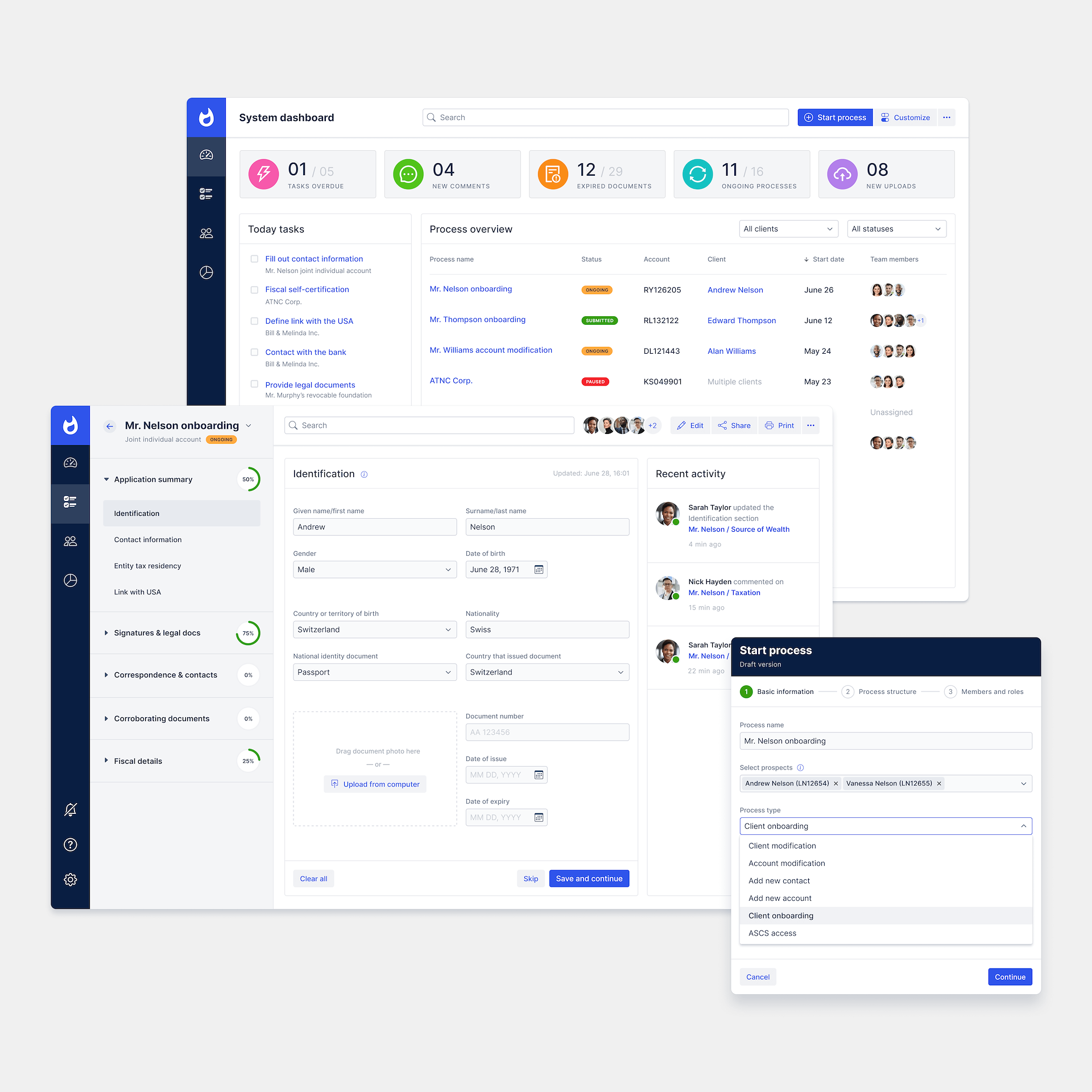
Introduction
Onboarding clients into a custodian bank was slow and manual. It relied heavily on paper and repeated steps. External Asset Managers often lacked clear templates and visibility, which caused repeated customer requests and delays.
This product digitizes the onboarding process. It improves efficiency while keeping regulatory requirements in check. It’s part of a larger Workspace and built mainly for Swiss banks, but it can work as a white-label solution for other banks as well.
Discovery
We started by talking with private banking experts to understand the current process. The research showed critical pain points and the need for better digital tools. We also looked at competing solutions and found few user-friendly platforms that covered the full onboarding workflow.
The main problem became clear: onboarding was slow, opaque, and caused repeated requests. There was a chance to make the process digital, faster, compliant, and scalable for different banks.
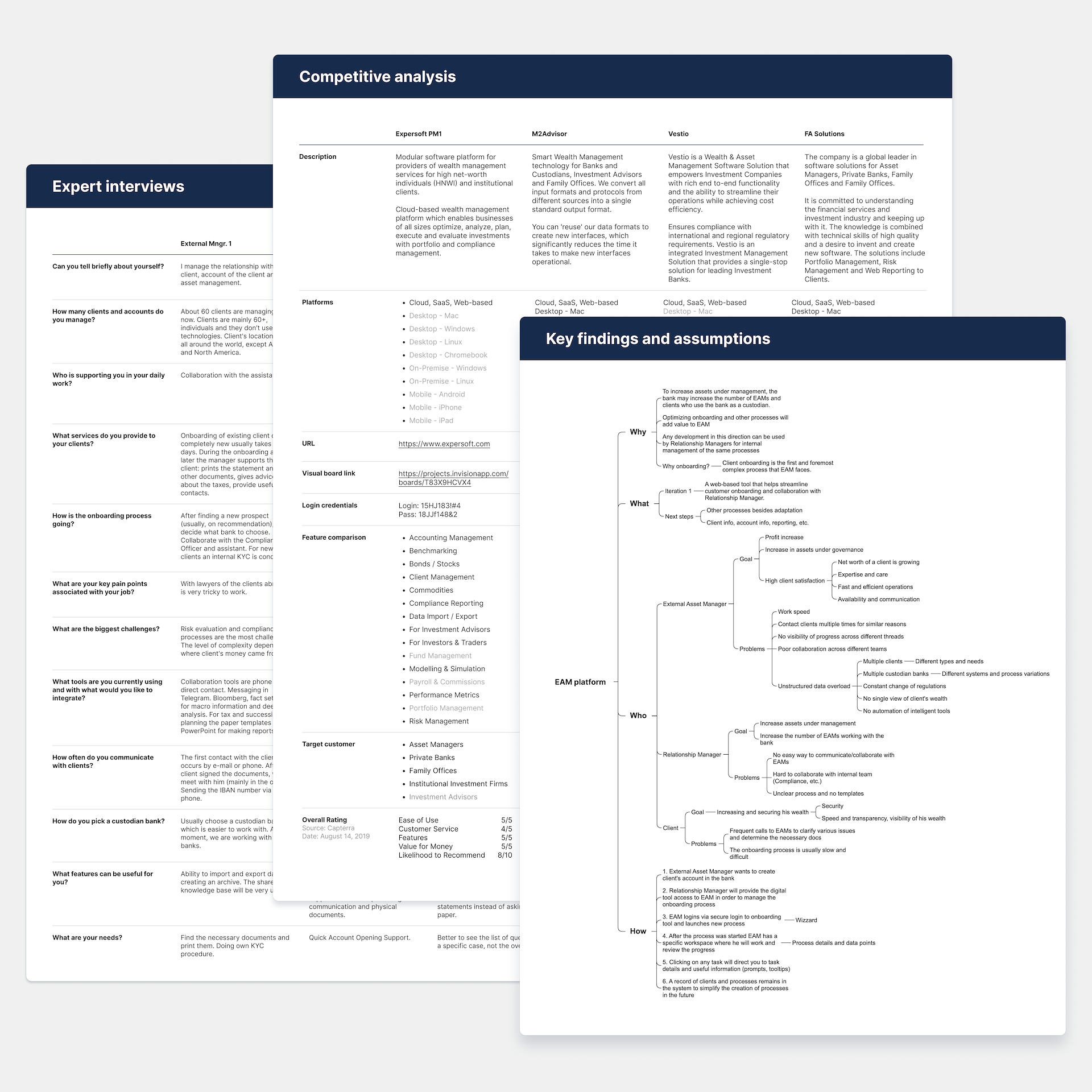
Definition
Workshops with stakeholders turned research insights into personas: External Asset Managers, Relationship Managers, and Clients. This helped map their responsibilities and workflows across multiple tools they used.
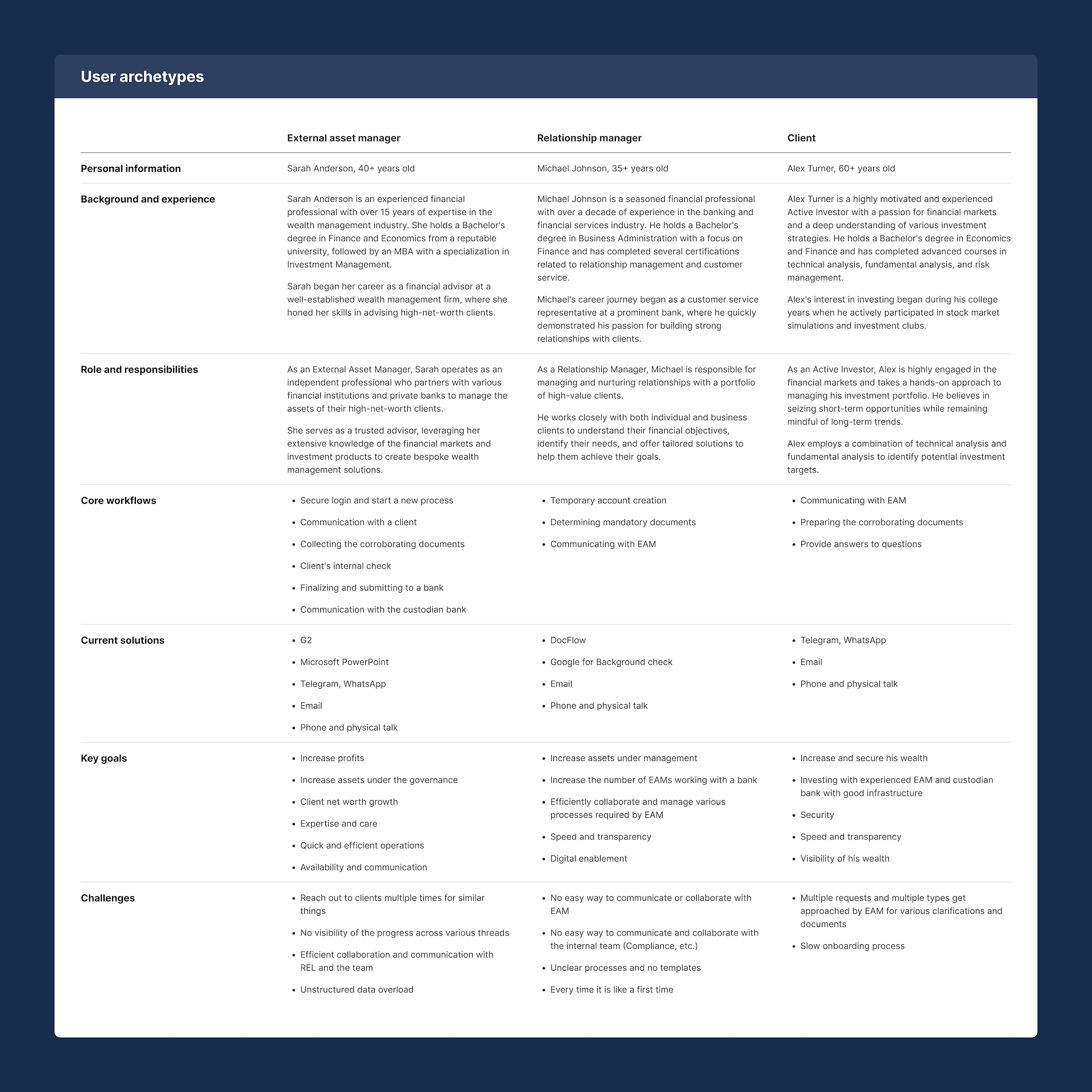
We explored their tasks, frustrations, and how they interacted with current systems. Empathy maps showed emotions, pain points, and triggers. Journey maps visualized the full onboarding experience.
The research revealed gaps in communication between EAMs and Relationship Managers. These often caused repeated documentation requests. Mapping these issues showed where the process could be improved.
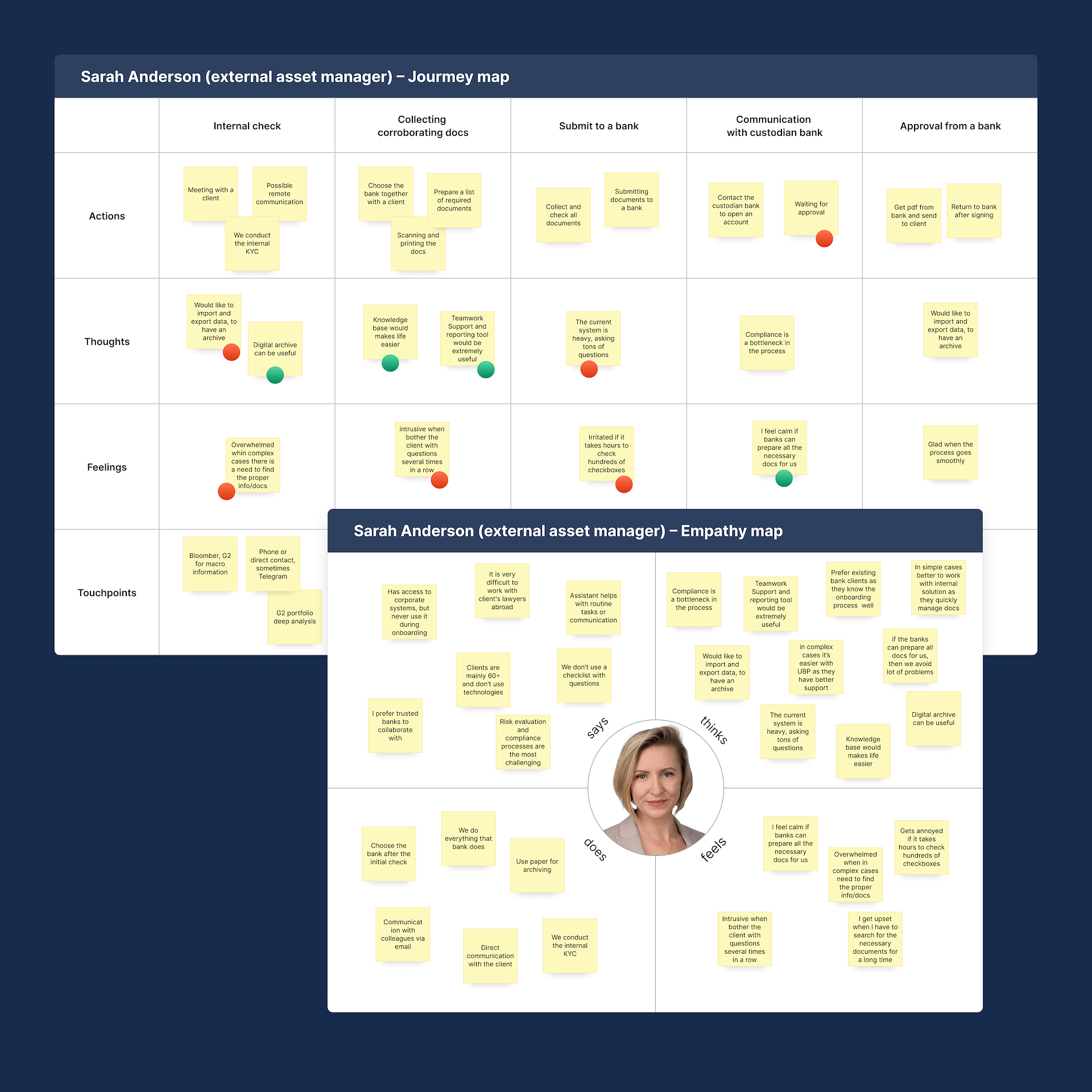
Design
We iterated on wireframes and prototypes, testing them with EAMs and bank staff. Every screen was structured to be logical and easy to use.
The focus was on clear information architecture. Content and features were organized to match user expectations, reduce cognitive load, and simplify navigation.
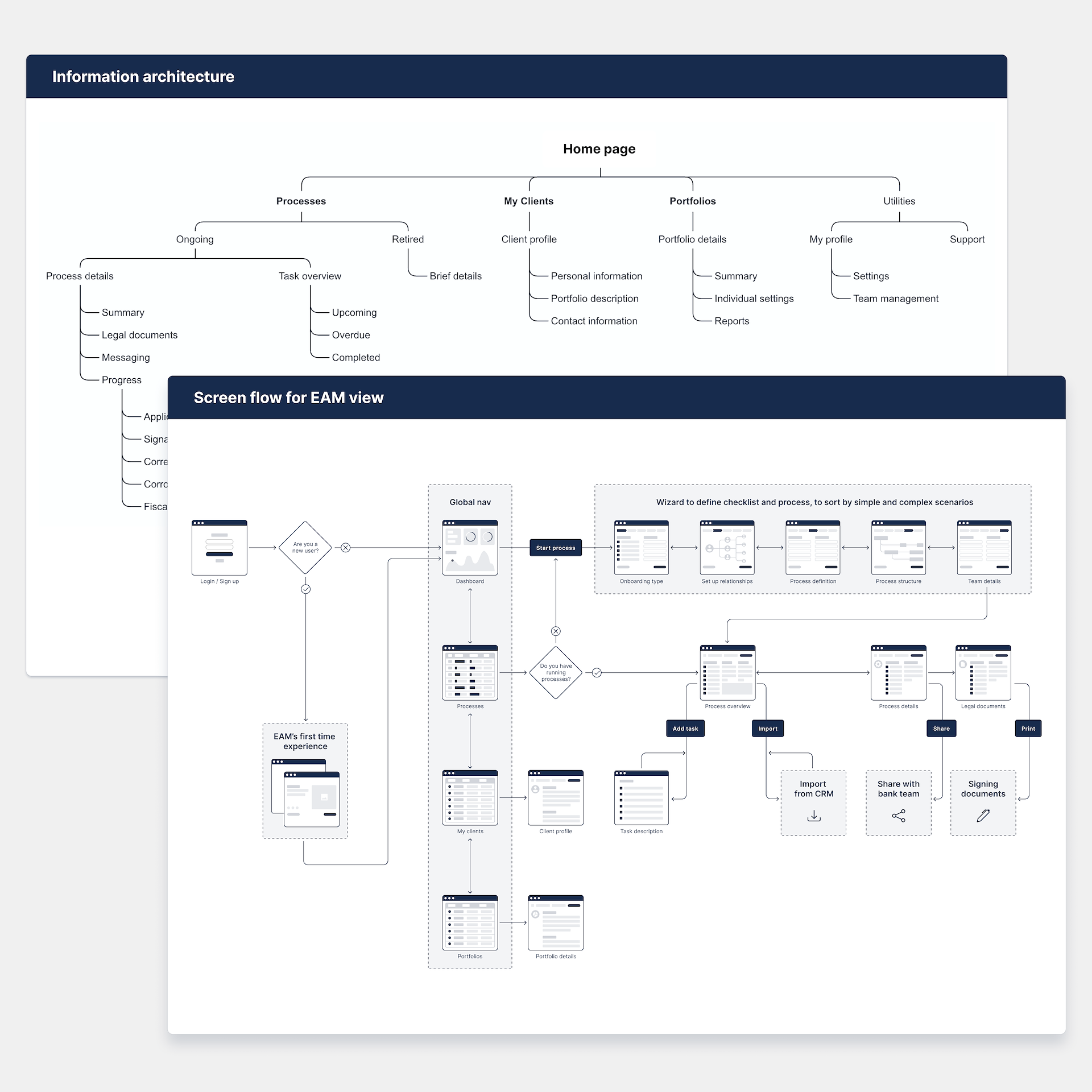
Wireframes outlined layouts and interactions. Key workflows, like starting EAM onboarding and collaborating with Relationship Managers, were prioritized and optimized for speed.
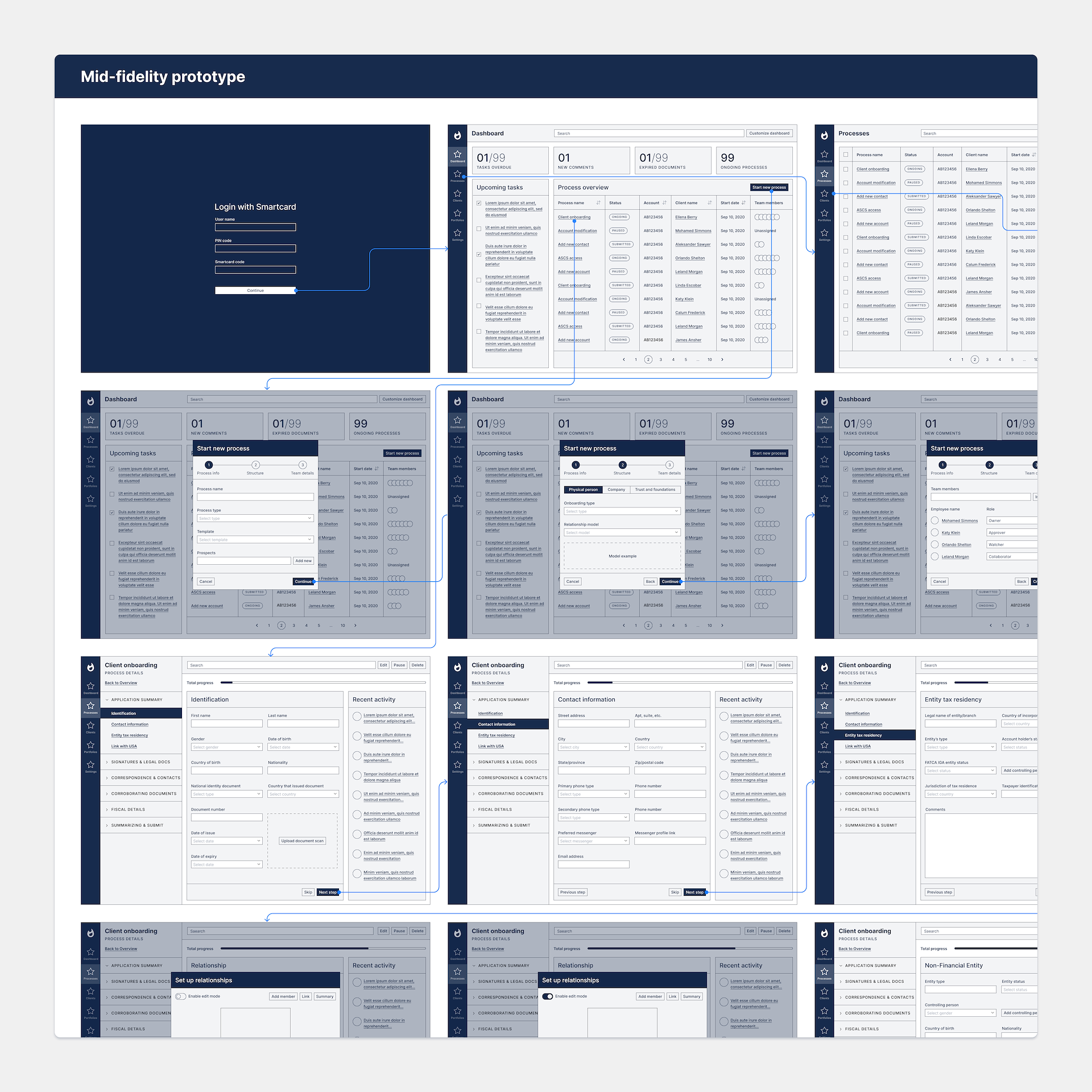
Prototypes were made clickable in Sketch and InVision and tested with real users. Feedback helped refine usability and validate design decisions.
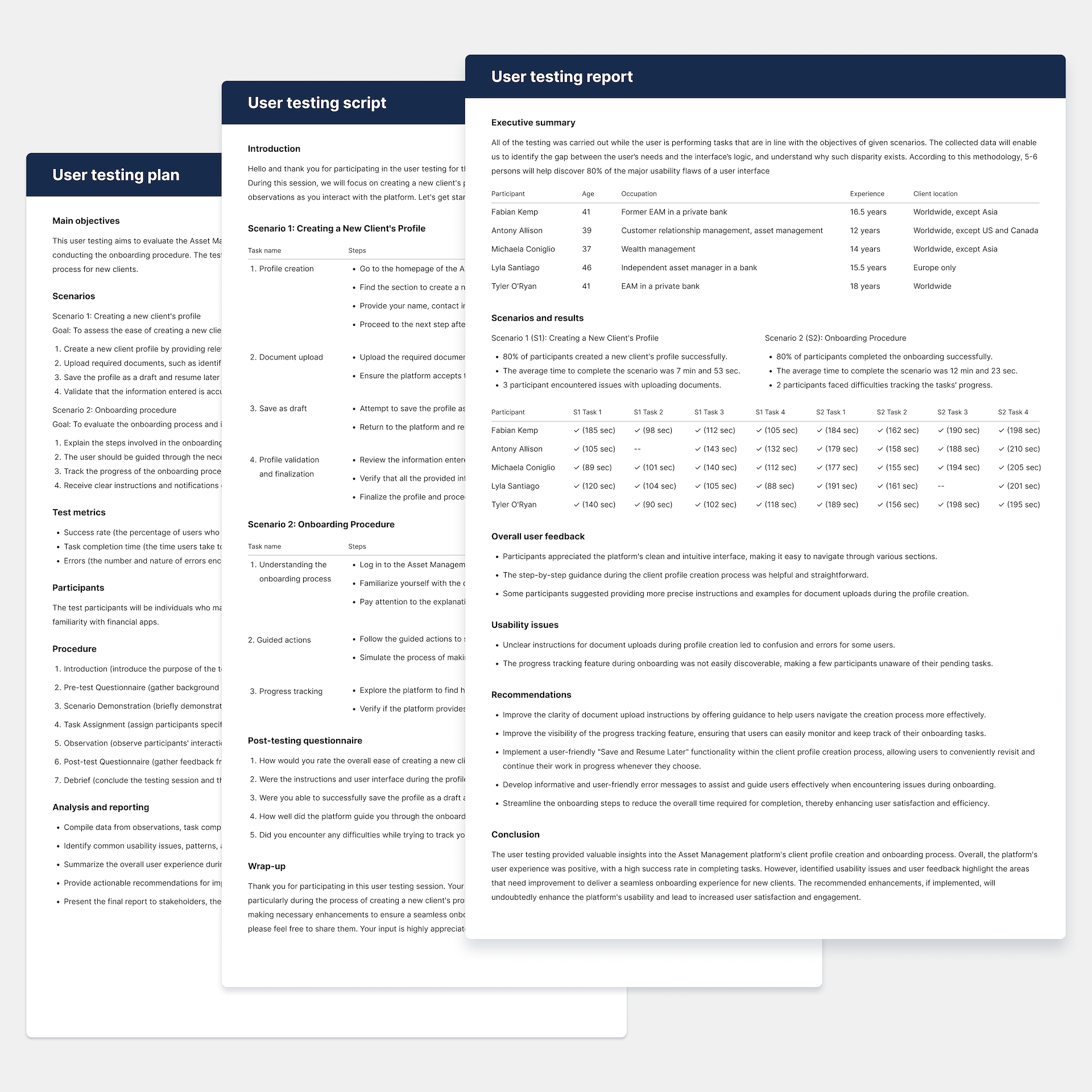
Delivery
After design approval, visual assets were prepared for development. Using Agile, we ran sprints with regular planning and reviews to incorporate feedback.
A pilot version launched with a small group of EAMs. Their feedback helped adjust the product before a full rollout. The final platform is part of the internal Workspace but can scale as a white-label solution.
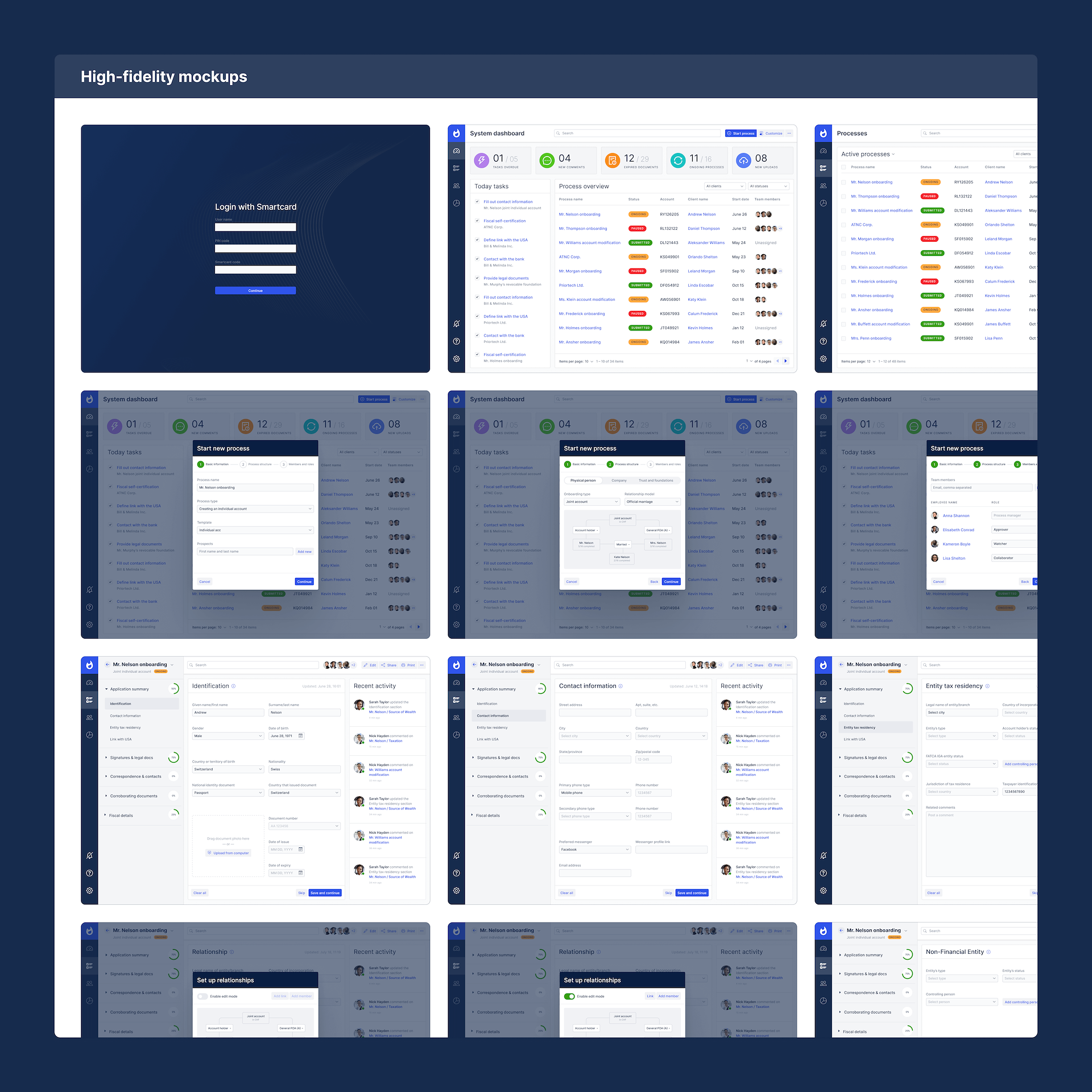
Achievements
The product made workflows faster for EAMs and Relationship Managers and improved the client experience:
— Onboarding time dropped by over 60%, boosting efficiency.
— Automated workflows improved accuracy and compliance.
— Transparency and collaboration increased, with core tasks taking under 3 minutes.
— Users gave positive feedback, rating satisfaction at 4.3 out of 5.